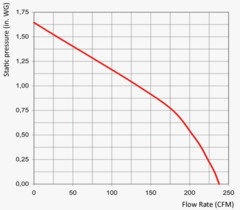4" outlet duct for a hood fan.
sergitin39
10 years ago
Featured Answer
Sort by:Oldest
Comments (17)
User
10 years agokaseki
10 years agoRelated Professionals
Martinsburg Kitchen & Bathroom Designers · North Versailles Kitchen & Bathroom Designers · Piedmont Kitchen & Bathroom Designers · Salmon Creek Kitchen & Bathroom Designers · Wentzville Kitchen & Bathroom Designers · Williamstown Kitchen & Bathroom Designers · Sunrise Manor Kitchen & Bathroom Remodelers · Channahon Kitchen & Bathroom Remodelers · Red Bank Kitchen & Bathroom Remodelers · Tempe Kitchen & Bathroom Remodelers · Burlington Cabinets & Cabinetry · Palos Verdes Estates Cabinets & Cabinetry · Red Bank Cabinets & Cabinetry · Central Cabinets & Cabinetry · Atascocita Cabinets & Cabinetrysergitin39
10 years agokaseki
10 years agofoodonastump
10 years agokaseki
10 years agosergitin39
10 years agoscole250
10 years agosergitin39
10 years agoBill Motzing
5 years agolast modified: 5 years agokaseki
5 years agoBill Motzing
5 years agolast modified: 5 years agoweedmeister
5 years agodan1888
5 years agokaseki
5 years agolast modified: 5 years agoBill Motzing
5 years ago
Related Stories

KITCHEN DESIGNHow to Choose the Right Hood Fan for Your Kitchen
Keep your kitchen clean and your home's air fresh by understanding all the options for ventilating via a hood fan
Full Story
KITCHEN DESIGNWhat to Know When Choosing a Range Hood
Find out the types of kitchen range hoods available and the options for customized units
Full Story
KITCHEN APPLIANCESLove to Cook? You Need a Fan. Find the Right Kind for You
Don't send budget dollars up in smoke when you need new kitchen ventilation. Here are 9 top types to consider
Full Story
KITCHEN OF THE WEEKKitchen of the Week: Fans of Traditional Style Go For a ‘Mad Men’ Look
The TV show inspires a couple to turn their back on the style they knew and embrace a more fun and funkier vibe in their kitchen
Full Story
KITCHEN APPLIANCESWhat to Consider When Adding a Range Hood
Get to know the types, styles and why you may want to skip a hood altogether
Full Story
KITCHEN APPLIANCESThe Many Ways to Get Creative With Kitchen Hoods
Distinctive hood designs — in reclaimed barn wood, zinc, copper and more — are transforming the look of kitchens
Full Story
REMODELING GUIDESThe 4 Stages of a Remodel: The Midproject Crisis
Prepare for the mechanical rough-in stage, and don't worry if things don’t look like they’re progressing on the surface
Full Story
KITCHEN DESIGNModern Storage and Sunshine Scare Away the Monster in a Kansas Kitchen
New windows and all-white cabinetry lighten a kitchen that was once dominated by an oversize range hood and inefficient cabinets
Full Story
SMALL KITCHENSThe 100-Square-Foot Kitchen: One Woman’s $4,500 DIY Crusade
Teaching herself how to remodel, Allison Macdonald adds function, smarter storage and snazzier materials
Full Story
KITCHEN WORKBOOK4 Steps to Get Ready for Kitchen Construction
Keep your project running smoothly from day one by following these guidelines
Full StoryMore Discussions










kaseki